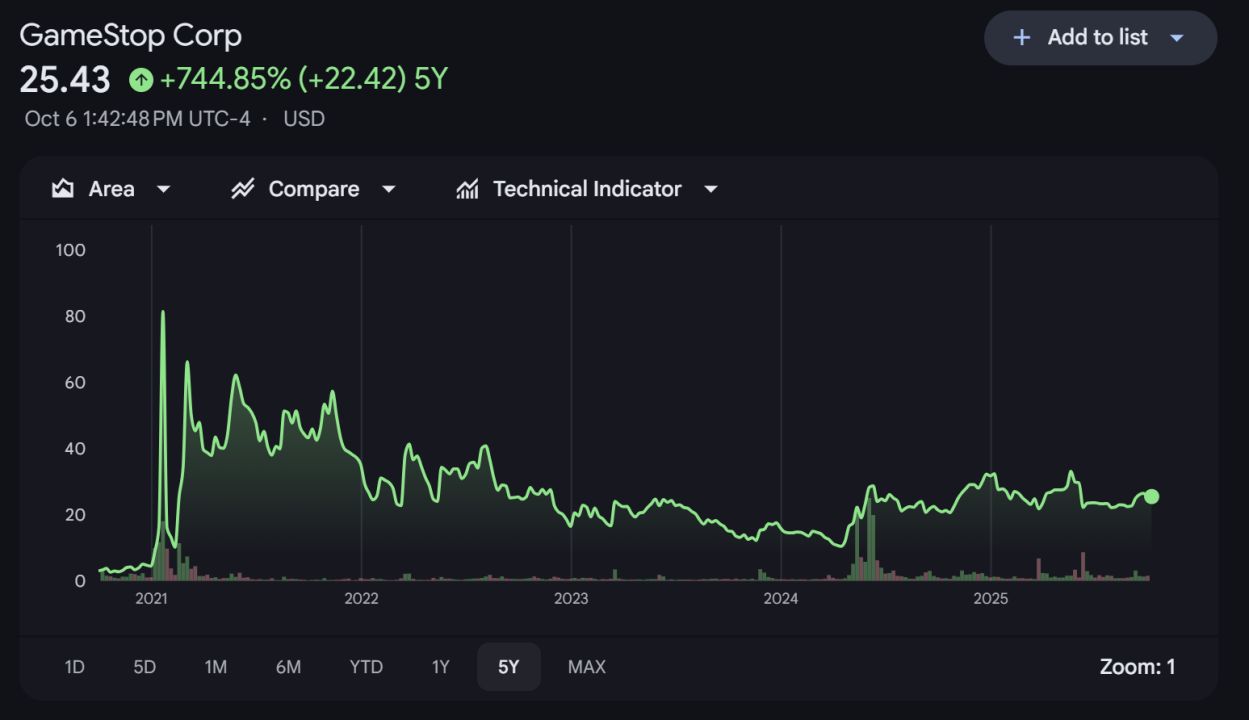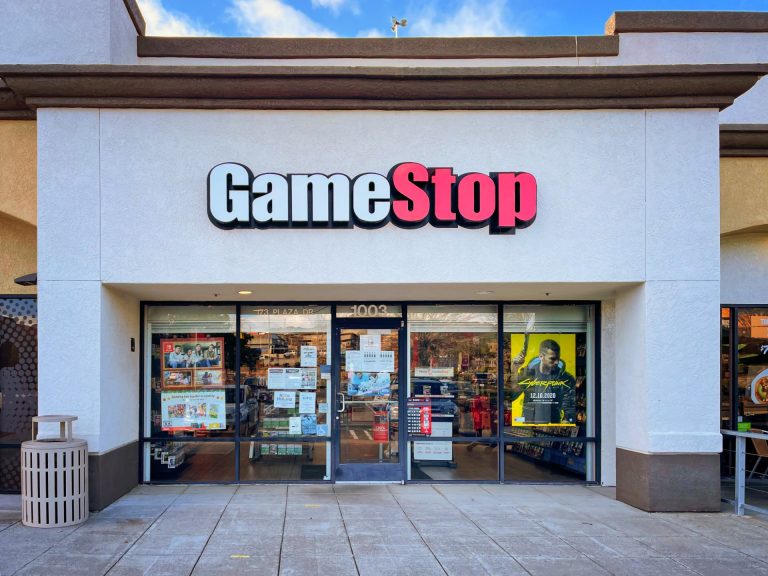Meme stocks roar again. GameStop returned to headlines this month as retail investors and speculators pushed its share price almost 5% higher in early trading after the company surprised the market with its quarterly results and fresh disclosure about digital-asset holdings. This is a significant jump given that prior to 2025, Gamestop’s stock had fallen fairly steadily since the pandemic
Short-lived spikes and viral trading chatter have occurred before for GameStop, as the company still sits at the awkward intersection of online communities, meme culture, and market momentum.
Still, the numbers reveal why this particular surge caught people’s attention. GameStop reported a revenue of $972.2 million,$0.25 a share, well above Wall Street’s $0.16 consensus and markedly higher than $0.1 a year earlier. Its revenue rose 21.8% year over year.

With so much capital and attention flowing to GameStop’s stock, what does this renewed frenzy mean for the health of physical-game retail and the people who make their living moving discs and consoles?
For more than a decade, the video game industry has undergone significant changes, with players increasingly opting for digital downloads and subscriptions over physical boxed discs. Physical copies still exist, but they now account for only a small slice of the overall revenue. Industry summaries show digital sales made up 95.4% of global game revenue in 2024, leaving physical copies with only about $8.5 billion of the market.
Several forces pushed this change into overdrive. Console marketplaces and PC launchers make buying near-instant and let publishers undercut retail margins. Subscription services and cloud gaming reduce the need to own titles outright.
For publishers, digital distribution cuts manufacturing and shipping, and returns costs. Meanwhile, it offers immediate access and smaller install sizes for players. Those economics have hollowed out many once-busy aisles of new releases and shifted the most lucrative sales toward downloadable add-ons and live-service content.
This trend is key for GameStop because the company’s legacy business now sits atop a shrinking market slice. Physical stores can still matter for collectors and console launches. Yet, as the industry’s revenue mix tilts digital, brick-and-mortar retailers must find new ways to draw customers.
In response, GameStop has shifted its shelf space and strategy away from a dependence on boxed new and used software. Over the past year, the retailer has leaned into high-margin categories like trading cards, limited-edition collectibles, apparel and exclusive merchandise.
Collectibles now account for a significantly larger share of sales, with management reporting a composition of 23.4% of net sales in the second quarter of 2025. GameStop is merchandising those products to drive impulse buys and repeat visits.
The company is also treating stores like event spaces. In-store events, product drops, midnight launches, and demo nights create urgency and foot traffic. Limited-time discounts, bundle offers, and early access perks are also strategic promotions the company uses to turn product interest into immediate purchases. This retail playbook leans on scarcity and excitement, making it easier to compete with digital convenience.
Beyond merchandising and events, GameStop has diversified its balance sheet. The retailer disclosed a purchase of 4,710 Bitcoin in May and later reported holdings valued at about $528.6 million at quarter-end. This financial diversification may attract capital, but it’s not the same as generating sustained revenue from customers visiting stores.
Collectibles and experiences can lift margins and revive traffic, but they don’t undo the shift to digital. The real proof will come from store-level improvements, such as rising same-store sales, higher ticket sizes, and repeat visits.
The latest price jump for Gamestop’s stock shows how easily market attention can change a narrative. However, long-term success for physical retailers will require stores to deliver value and replace the revenue once driven by boxed software.
Source: Yahoo! Finance


